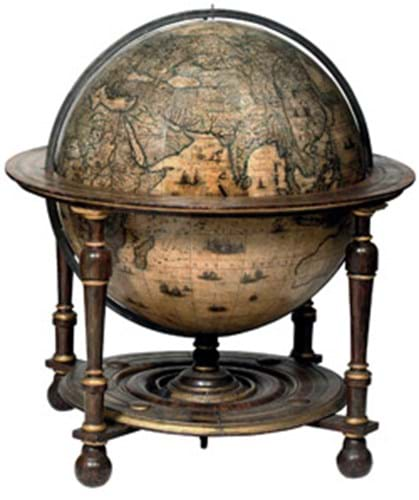
They proved the highlight of the collection of the Princely House of Liechtenstein offered at Christie's Amsterdam on April 1.
With a 200,000-300,000 euro estimate, the 2ft 2in (68cm) globes attracted bids from seven phones - one of which raised the bidding in a single increment from €90,000 to €400,000. Other telephones were active to 500,000 euros, when it came down to the no-nonsense telephone bidder and the European private collector in the room, who secured them at 680,000 euros (£567,000), plus buyer's premium.
Blaeu studied with the renowned Danish astronomer Tycho Brahe in 1595, (whose portrait appears on the celestial globe) before settling in Amsterdam as a globe, instrument and mapmaker in 1596.
Appointed mapmaker to the Dutch East India Company in 1633, his firm was responsible for kick-starting globe making as a viable commercial enterprise.
The size of this pair is known as 'the royal format', and the largest Blaeu ever produced. After their introduction in 1616 they remained the largest globes on the market for 70 years.
Blaeu died in 1638 but his two sons, Cornelius and Johannes, continued the business.
Johannes printed these globes, which were republished three times during the 17th century.
The celestial example dates to c.1630 and the terrestrial example to c.1645-48, each supported in a later stained and moulded wood plinth base. They show California as an island and are illustrated with sea monsters, ships, the Great Wall of China and the signs of the Zodiac.




